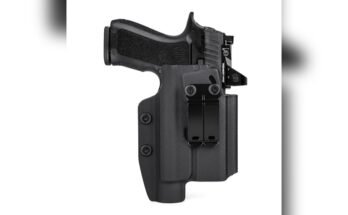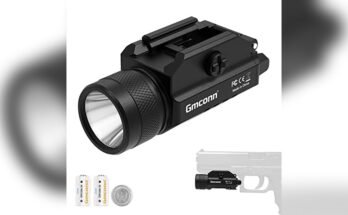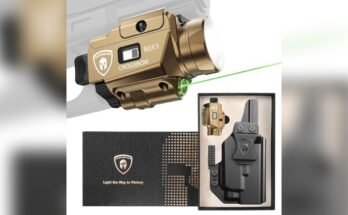If you have asked what is the difference between IWB and OWB holsters, you are in the right place. I have carried both for years, taught new carriers, and tested gear on the range and in everyday life. The short answer is simple: IWB sits inside your waistband for deeper concealment, while OWB rides outside your belt for easier access and comfort. The long answer matters more. In this guide, I break down what works, why it works, and how to choose what fits your life, your body, and your goals.
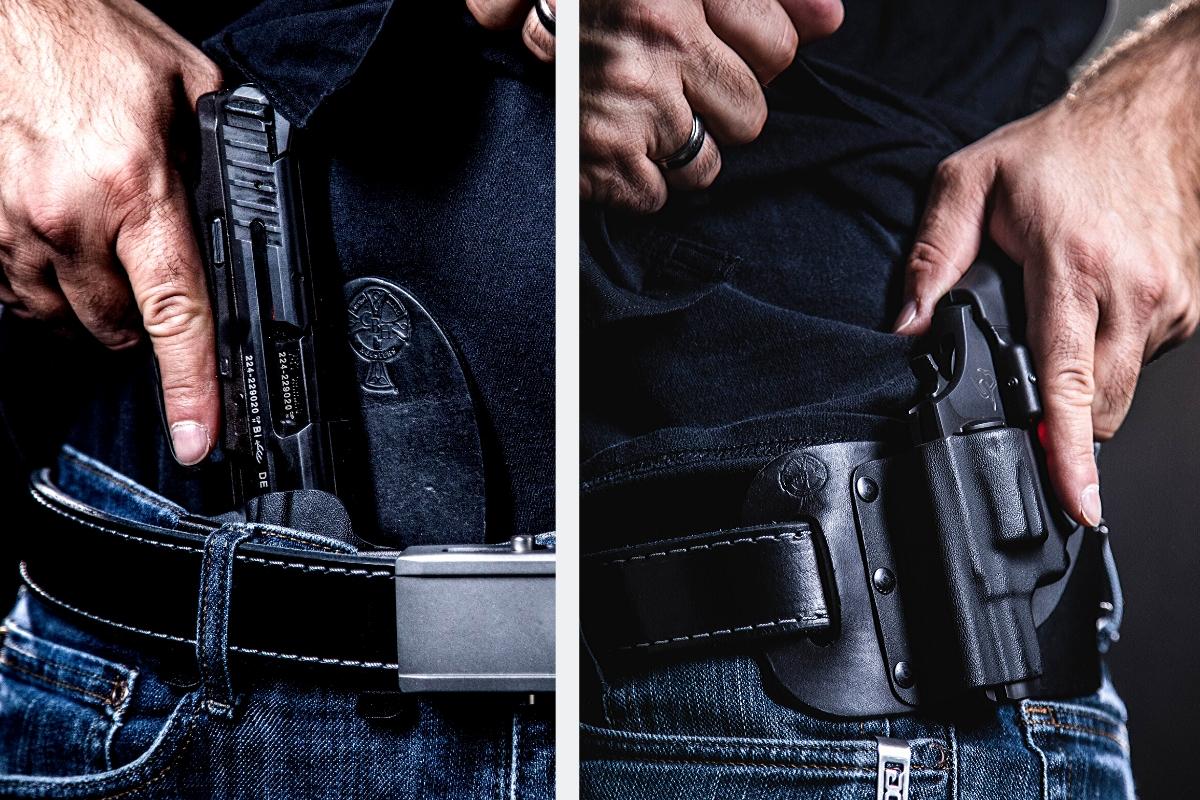
IWB vs. OWB: Clear Definitions That Matter
IWB stands for Inside the Waistband. The holster sits between your body and your pants, anchored by clips or loops to your belt. It is made for concealed carry and reduces printing when set up well.
OWB stands for Outside the Waistband. The holster rides on the belt, outside the pants. It is easier to access and often more comfortable, but can be harder to conceal without a cover garment.
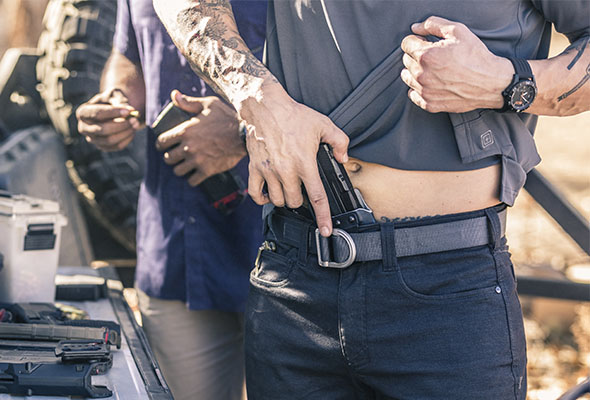
Concealment and Printing
IWB wins for concealment. It tucks the gun closer to your body and hides the lower half under your pants. With a good belt, a wing or claw, and the right cant, you can hide even a mid-size pistol under a t-shirt.
OWB can conceal, but it needs help. A longer shirt, a jacket, or a hoodie can mask the outline. Pancake-style OWB holsters hug the body and reduce printing. For hot weather or tight shirts, IWB is usually the safer bet.

Comfort and All-Day Wear
Comfort is personal. IWB adds pressure inside your waistline. A wedge and a soft sweat guard can improve comfort a lot. I prefer IWB at 3 to 4 o’clock when driving long distances, and appendix IWB only with a well-tuned setup.
OWB spreads weight more evenly on the belt. It is often the most comfortable for long days, classes, and range work. If your daily dress allows a cover garment, OWB feels almost like not carrying at all.

Draw Speed and Access
OWB is usually faster. The grip sits clear of the waistband. There is less friction and fewer obstacles for your hand and shirt.
IWB is slightly slower, and it depends on your shirt and holster angle. With practice, the gap shrinks. Timed draws in classes show the difference is often a few tenths of a second when both are set up well. Proper training matters more than the holster alone.

Retention and Safety
Both IWB and OWB can be safe and secure. Good holsters fully cover the trigger, hold their shape, and keep the gun in place through movement.
OWB models often come with formal retention ratings like Level I, Level II, or Level III for duty and open carry. IWB relies more on friction and fit, with some models offering active retention. Choose a design that balances speed and security for your environment and skill level. Quality and a stiff belt make the biggest difference.
Clothing, Belt, and Body Type
Your belt is the backbone. A purpose-built gun belt stops sag, keeps the holster in place, and improves comfort. It also reduces printing.
Body shape affects success. Slim frames may find appendix IWB easier to hide. Curvier or athletic builds may prefer strong-side IWB or OWB pancake holsters. Small changes in ride height, cant, and clip position can transform the fit. Do not fear swapping parts or trying different clips.
Use Cases and Scenarios
Daily concealed carry: IWB shines for low-profile carry at work, errands, or social events. It plays well with casual wear and light cover garments.
Training days and range work: OWB is ideal for long range sessions and classes. Less fatigue, faster draws, and cleaner reholstering help you focus on skills.
Cold weather or layers: Both work. IWB stays hidden under layers. OWB is easy with coats and longer shirts.
Home carry or property work: OWB is simple and comfortable if concealment is not a priority.
Materials and Mounting Options
Kydex offers consistency, speed, and durability. It clicks into place, keeps the mouth open, and resists sweat. It is my go-to for both IWB and OWB.
Leather molds to the body and feels great. It can be very comfortable, but it needs care and can soften over time. Hybrid designs combine a Kydex shell with a soft backer for comfort.
Mounting matters. For IWB, clips, loops, wings, and wedges control tilt and concealment. For OWB, belt loops, pancake wings, and quick-attach systems change how tight the holster rides to your body.
Training, Maintenance, and Legal Notes
Practice with the holster you carry. Dry practice your draw with strict trigger discipline. Test your setup while standing, seated, and in your car. Good reps beat gear swaps.
Inspect your holster often. Check screws, clips, edges, and retention. Replace worn parts before they fail.
Know your local laws. Some areas limit open carry or have transport rules. Concealed means concealed, but safety and compliance come first.
How To Choose Between IWB and OWB
– List your priorities. Concealment, comfort, speed, or all of the above.
– Audit your wardrobe. Tight shirts favor IWB. Layers favor both.
– Match gun size to method. Subcompacts are easy IWB. Full-size guns shine OWB unless you have great concealment aids.
– Get a proper belt. It solves most comfort and printing issues.
– Test positions. Appendix, 3 to 4 o’clock, or 5 o’clock. Small shifts change everything.
– Train and adjust. Tune ride height, cant, and retention. Keep what you can repeat under stress.
Frequently Asked Questions Of What Is The Difference Between IWB And OWB Holsters?
Which Is Better For Concealed Carry: IWB Or OWB?
IWB is usually better for deep concealment, especially in warm weather or with slim shirts. OWB can work with a proper cover garment. Your clothing and body type decide the winner.
Is OWB Always Faster To Draw Than IWB?
OWB is often faster due to cleaner access. With training, IWB can be nearly as fast. Shirt management and consistent grip are the keys.
Can I Conceal A Full-Size Gun With IWB?
Yes, with the right setup. Use a wing, a wedge, proper cant, and a stiff belt. A slightly longer shirt helps reduce printing.
Does Material Matter: Kydex Or Leather?
Both work. Kydex gives consistent retention and easy reholstering. Leather offers comfort and classic feel but needs more care.
What Belt Should I Use For Either Holster?
Use a dedicated gun belt. It supports weight, reduces sag, and improves comfort and concealment for both IWB and OWB.
Is Appendix IWB Safe?
Yes, when done right. Use a rigid holster that covers the trigger, keep fingers off the trigger until you are on target, and reholster with care. Training and discipline are essential.
How Do Retention Levels Work For OWB?
Level I relies on friction or a single device. Level II adds another device like a thumb release. Level III adds yet another safeguard. Higher levels improve security but can slow the draw.
Wrap-Up And Next Steps
The core difference is simple: IWB hides better, OWB carries easier. Your choice depends on your lifestyle, clothing, body type, and training time. I carry IWB when I need to stay low profile and OWB when comfort and speed matter most. Start with a good belt, a quality holster, and a setup you can practice with daily.
Pick one method this week, tune the fit, and run focused dry practice. Track what prints, what rubs, and what works. Ready to go deeper? Explore more guides, subscribe for updates, or drop a question in the comments below.

